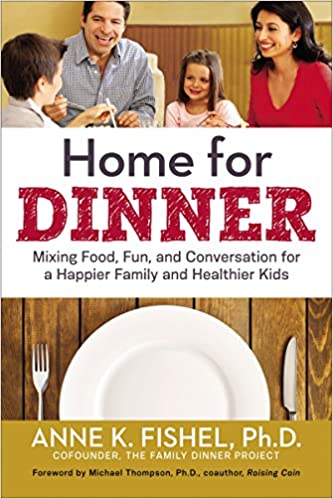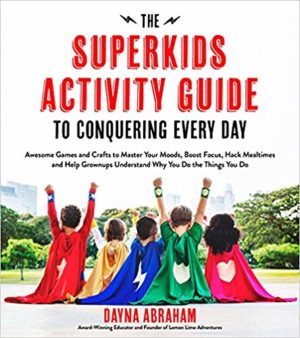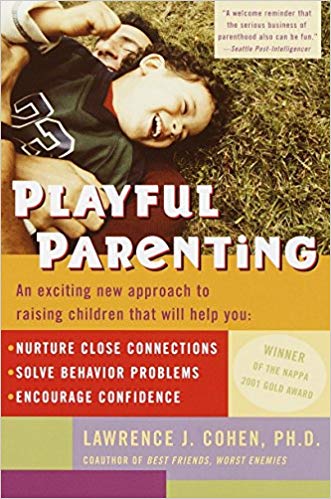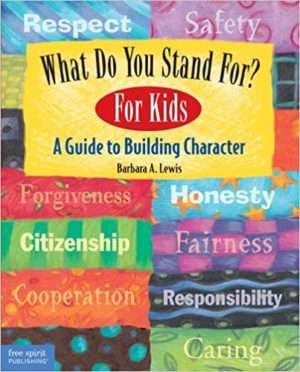 Last fall, I put my oldest son into public school for the first time.
Last fall, I put my oldest son into public school for the first time.
He was in second grade. We had just moved to a new state and I was hoping that going to “normal” school would help him make friends and get adjusted to our new home. Prior to that, he’d been in an online school–which basically meant he was being homeschooled, but with a state-sponsored curriculum.
There were lots of reasons I initially chose to keep him home. I worried about the strong academic focus of our local elementary school and the kind of pressure that would be present, even in kindergarten. I worried about long hours away from home. I worried about minimal outdoor recess time for a child who didn’t particularly excel at sitting still.
What I didn’t realize at the time was how much staying home with me had allowed my son to grow into himself and to build his own sense of who he is and what he likes. I also never anticipated how quickly public school would pressure him into conformity.
I still remember the first time he went to school with his nails painted. We had all–both of my sons and myself–painted our nails over the weekend: blue and purple with sparkles.
When I picked him up after school on Monday, his nails were bare. His classmates had made fun of him and he’d painstakingly scraped all the colors and glitter off over the course of the day.
I was heartbroken. I had always tried so hard to build up my son’s sense of individuality, to support his interests and not force him into a box based on socially acceptable, but outdated gender norms. And a few months of public school was already working to undermine all that.
Authenticity and Gender Norms
 I never made a conscious decision to try to raise my children outside of this particular box; all I’ve ever wanted is for my kids to be their own authentic selves and to support them in their self-discovery of all that entails.
I never made a conscious decision to try to raise my children outside of this particular box; all I’ve ever wanted is for my kids to be their own authentic selves and to support them in their self-discovery of all that entails.
Even so, there’s always been a curious war inside me regarding this. I’ve often wondered if it would’ve been easier if I’d had girls. Having grown up female myself, I have a strong sense of the many pressures girls face, even in an age of growing empowerment. I would’ve been blessed to raise a strong daughter who loved what and who she loved, who was connected with her spirit and who celebrated her body.
Instead, I got boys. Two of them. And early on, I struggled with what it would mean to let them be themselves. I didn’t want their passions and possibilities limited to stereotypically masculine pursuits; but if I encouraged any interests in “girl” things, what kind of risks would I be taking with their self-esteem? How much teasing would they endure?
 I’m far from the only one with these concerns. In her book Tomboy, author Lisa Selin Davis explores the long history of girls who blur the socially-constructed line between girl and boy. Tomboyism tends to be acceptable in early childhood, but girls who continue pushing these boundaries into their teens and beyond often face stark social consequences.
I’m far from the only one with these concerns. In her book Tomboy, author Lisa Selin Davis explores the long history of girls who blur the socially-constructed line between girl and boy. Tomboyism tends to be acceptable in early childhood, but girls who continue pushing these boundaries into their teens and beyond often face stark social consequences.
And while it’s not the main focus of her book, Ms. Davis touches on something that any freethinking boy-parent will notice from an early age:
“Tomboys [are] A-Okay, but anything that could contribute to a boy becoming a sissy? No way!”
It’s interesting to consider the contrast between what’s accepted for boys versus girls, and the way society responds to those who cross that line. It’s often considered cute (up to a certain age, anyway) and even celebrated when girls do “boy” things, such as when they play sports or have short hair or refuse to wear dresses. Yet, this is far from universal; many families still insist that girls wear their hair long, many school dress codes require girls to wear skirts, and the cultural pressure to genderize female-born babies begins at birth with giant hair bows and floral headbands.
And once girls hit puberty, that pressure increases. Department stores push girl clothing that bares legs and midriffs, magazines focus on makeup tips and boys, movies depict girls as clique-y and shallow. Any girl who doesn’t fit into this mold is guaranteed to feel out-of-place at best and risks full-on bullying if they deviate too far from the norm.
Meanwhile, boys who venture into “girl” territory are generally made to feel unwelcome from an early age. Any kid can have short hair, but most people still assume that long hair is only for girls. Any kid can wear clothes that celebrate dinosaurs or space, but unicorns and skirts are automatically feminine. Soccer and karate are for all kids, but dance classes are populated almost exclusively by girls. Girls have the entire rainbow open to them, but boys are mostly limited to blue, black, grey, and other darker colors.
And a boy wearing nail polish? That’s just asking for trouble.
We can and should celebrate our children being their own true authentic selves, girls and boys. But sadly, far too often kids are stifled by societal expectations of normalcy, stuffed into boxes they may not fit in because putting a toe outside means facing judgment and mockery. Gender-based stereotypes are damaging to all children.
We all want our children to be true to themselves, whether that’s embracing their own sense of style, consuming media because they find it interesting (and not just because it’s popular), or celebrating all aspects of their personalities. As you strive to encourage your child to be their unique self, here are some steps to follow and ideas to incorporate into your parenting routines.
#1: Focus On What We Can Control
 Perhaps the most important lesson we can remember when we, as parents, are watching our children struggle is that we absolutely cannot–and should not–control everything in their lives. Instead, our job is to focus on what we can control.
Perhaps the most important lesson we can remember when we, as parents, are watching our children struggle is that we absolutely cannot–and should not–control everything in their lives. Instead, our job is to focus on what we can control.
In The Power of Showing Up, authors Dr. Daniel Siegel and Dr. Tina Payne Bryson tell us that one of the most important things we can do for our children is let them know that they are seen.
“It’s about attuning to what’s going on inside of them and really focusing our attention on their inner feelings, thoughts, memories…we pay attention to their emotions, both positive and negative.”
Why is this important? When kids know that we’re there for them and that they are “seen,” it helps them develop their own sense of social and emotional intelligence. If our kids are struggling with reconciling their unique sense of self with what others tell them they should be, they will most often look to us for answers on how to respond.
This is just another way our children learn via what we model. What we do and say shows them that we believe their problems are valid and builds the foundation for how they will handle these problems in the future.
In other words, we can’t control how our children react to negative experiences and we shouldn’t try to. We can, however, listen to their stories and respond with empathy. We can show them that we care about their troubles, big or small.
Some of the things we can control as we support and encourage our children to be their unique selves includes:
- How we react to their stories. We can refrain from putting their classmates or friends down over a bad situation, avoid name calling or saying someone else’s thoughts or opinions are not valid.
- How we help them analyze their own responses to situations, without making them feel bad.
- How we help them brainstorm ideas for what to do if a similar situation arises again. We can avoid trying to “fix” the situation for them; rather, we can empower them to take control for themselves.
 Kids are sponges–they listen to everything we say and see everything we do, with those observations shaping the beliefs they come to hold. In addition to what they learn from the people around them, children also pick up on messages of what is or is not acceptable in our society from books and screens.
Kids are sponges–they listen to everything we say and see everything we do, with those observations shaping the beliefs they come to hold. In addition to what they learn from the people around them, children also pick up on messages of what is or is not acceptable in our society from books and screens.
While we may be able to hold some control over what our own children may view from social media, we do not have control over what their friends and classmates are learning from home. When kids make fun of each other it’s because somewhere along the way, they’ve picked up the idea that others should look or talk or behave in a certain way and that it’s okay to single someone out for stepping outside that box. We sadly have no control over these messages, so all we can do is work with what we can control.
While letting go of certain things beyond our power is the lesson here, there are times when we should step in. When bullying is witnessed, regardless of where, adults have a responsibility to stop it. If our kids are really struggling with a classmate at school and they seem unable to create any meaningful change on their own, parents can and should speak with a teacher or administrator.
#2: Use Talk to Connect and Encourage
 The simple act of talking can be one of the most powerful tools in our households. It can be helpful to develop a mantra that no topic is off limits for conversation, regardless of how big or small. It’s especially important to make sure we are discussing the difficult topics (like racism, sexism, and gender-based stereotypes) with some regularity.
The simple act of talking can be one of the most powerful tools in our households. It can be helpful to develop a mantra that no topic is off limits for conversation, regardless of how big or small. It’s especially important to make sure we are discussing the difficult topics (like racism, sexism, and gender-based stereotypes) with some regularity.
Even if some of these are subjects we have shied away from in the past, it’s never too late to cultivate a more open attitude toward them. It’s important that our children know they can come to us about anything.
On the day of the nail polish incident, I struggled with how to talk to my kid. While I knew teasing would happen eventually, for one reason or another, I still felt unprepared to deal with it. At first, all I could do was fall back on the tried-and-true positive parenting techniques of listening and empathy.
After a little more thought, I was able to bring the topic back up in a more constructive manner. Family meals have always been important to me, and dinner is an excellent time for meaningful conversation. I used dinner that night to get my child talking about how his classmate’s words had made him feel uncomfortably different. This prompted a conversation about why it’s important to not let the opinions of others affect what we like and dislike.
 In her book Home for Dinner, Anne K. Fishel talks extensively about how meals can be an excellent way to talk about subjects that are important to both parents and kids. She offers numerous suggestions for keeping conversation flowing and using this time to have fun while building family unity in the process.
In her book Home for Dinner, Anne K. Fishel talks extensively about how meals can be an excellent way to talk about subjects that are important to both parents and kids. She offers numerous suggestions for keeping conversation flowing and using this time to have fun while building family unity in the process.
- Don’t just ask questions; instead, encourage kids to tell the story of their day. Avoid simple, boring questions with a yes/no answer. Instead, strive for open-ended questions: Who did you play with at recess? Which subject was your favorite today? What’s something that made you laugh? Encourage children to keep talking by repeating back what we are hearing and insert bits of our own stories and experience when appropriate.
- Play games. Being playful might encourage kids to open up more than a normal conversation would. Try a game like “Rose and Thorn,” where everyone describes something positive and something negative/difficult. With older kids, try “Two Truths and a Tall Tale,” where everyone talks about two real things that happened that day and one that is completely made up. The others then have to guess which is which.
 Make a Conversation Jar. For parents who often feel on-the-spot to figure out what to talk about, try creating a jar full of conversation starters. We can let our kid(s) help decorate a jar, then write questions/prompts on popsicle sticks, as Dayna Abraham proposes in The Superkids Activity Guide, or simply on pieces of paper, like Fishel suggests. These can be silly or serious topics, specific or open-ended. Some ideas: What is your favorite thing to do outside? Would you rather be able to fly or turn invisible? Where do you feel most relaxed?
Make a Conversation Jar. For parents who often feel on-the-spot to figure out what to talk about, try creating a jar full of conversation starters. We can let our kid(s) help decorate a jar, then write questions/prompts on popsicle sticks, as Dayna Abraham proposes in The Superkids Activity Guide, or simply on pieces of paper, like Fishel suggests. These can be silly or serious topics, specific or open-ended. Some ideas: What is your favorite thing to do outside? Would you rather be able to fly or turn invisible? Where do you feel most relaxed?- Be guided by the calendar. This can be a simple, straightforward idea, or it can lead to bigger, deeper subjects. Thanksgiving can invite conversations about the importance of gratitude, or it can lead to discussions about how Americans idolize the holiday vs. the true consequences of European immigration to this land. Winter can be a time to discuss the history of any specific holiday the family celebrates, or it can be a time to explore the holidays from other faiths and cultures.
- Talk about the news. Nationwide protests by Black Lives Matter created and continue to create an ideal springboard for discussion of race and racism in America. Election season invites us to not just talk about the election process and the importance of voting, but to also delve deeper into the concept of democracy itself. Be sure to sprinkle some silliness in there too! Look in the newspaper or online for cute stories about animals or heartwarming stories about families and let those be a starting point.
Some days, regardless of how we approach it, our kids might not want to talk. On those days we should remember that we (the adults) are part of the conversation too! Telling stories about our own day or focusing on a topic important to our own life might invite children to open up in turn.
 And remember that family conversations don’t have to be entirely verbal. In Playful Parenting, Dr. Lawrence J. Cohen suggests that instead of asking for details, parents of a reluctant talker might instead ask for a simple thumbs-up or thumbs-down to their questions. This lets the child participate with much less pressure for specific details.
And remember that family conversations don’t have to be entirely verbal. In Playful Parenting, Dr. Lawrence J. Cohen suggests that instead of asking for details, parents of a reluctant talker might instead ask for a simple thumbs-up or thumbs-down to their questions. This lets the child participate with much less pressure for specific details.
A joint diary/journal is another great option for a child who does not want to use verbal words. Writing in a journal allows the family to take turns writing things to each other, either by using prompted questions or by taking a more open-ended approach.
Sometimes writing lets us discuss subjects that feel too weighty to talk about out loud, such as the pressure to fit in and the courage it takes to be unique. And sometimes writing is just the push a child needs to feel comfortable talking face-to-face later on.
#3: R-E-S-P-E-C-T: Find Out What it Means to Them
 When children tease one another for their real or perceived differences, it boils down to a lack of respect. As parents, raising children to be respectful is surely a top parenting goal. But respect is a tricky concept to teach, and even the most self-conscious of us sometimes slip up when it comes to modeling respect at home.
When children tease one another for their real or perceived differences, it boils down to a lack of respect. As parents, raising children to be respectful is surely a top parenting goal. But respect is a tricky concept to teach, and even the most self-conscious of us sometimes slip up when it comes to modeling respect at home.
The book What Do You Stand For? For Kids, which has an entire chapter devoted to respect, defines the concept like this:
“When you respect someone, you care about how the person feels. You believe that the person’s ideas, thoughts, and feelings are important. You believe that he or she deserves to be treated kindly and politely.”
The book goes on to remind us, “Lots of people are different from you in many ways. Different doesn’t mean bad or wrong.” It’s natural and normal for kids to notice differences between themselves and other people from a very young age; but teaching them to respect those differences is a lesson that requires frequent reinforcement.
One way to teach this kind of respect is to simply to talk about it. A lot. This might include reading stories in which characters encounter others who are different from them. Or it could mean talking about recent or past incidents where our child (or ourselves) felt disrespected.
To modify an activity from What Do You Stand For? For Kids, try having kids write down any words people have ever called them that hurt their feelings, or any mean words they may have used to describe people who are different from them. These may be words related to gender, appearance (skin color, hair color/style, height, weight), religion, personality, or more. Take that list, tear it up, crumple up the pieces, and throw them away. This is a symbolic gesture that they’re done with those words and will strive to never use them again!
Consider creating a space for kids to discuss respect among themselves. Melia Keeton-Digby introduces the idea of sacred circling for kids in her books The Heroines Club and The Hero’s Heart. Keeton-Digby tells us,
“Throughout the ages, people from all walks of life, religions, political systems, and cultures have gathered in sacred circles to co-create community and to collaborate in the forming of a shared life experience.”
 To put it more simply, a circle can be a place where participants come together to discuss important concepts and share their own stories and authentic truths. A circling group is an ideal way for kids to explore respect and other important topics freely amongst their peers, with the guidance of a parent or other trusted adult.
To put it more simply, a circle can be a place where participants come together to discuss important concepts and share their own stories and authentic truths. A circling group is an ideal way for kids to explore respect and other important topics freely amongst their peers, with the guidance of a parent or other trusted adult.
Keeton-Digby’s books offer guidelines for forming groups like this within your community. The most important factor is a set of principles and guidelines that everyone involved can agree on. The Hero’s Heart suggests several key ingredients, including:
- Sanctity: The circle is a place outside of everyday life, a place of love and peace and healing.
- Safety: Anything spoken of in the circle is kept in confidence; nothing is shared outside the circle with people who aren’t a part of it.
- Witnessing: When someone talks in the circle, others listen and accept; this is not the time for advice or attempts to “fix” things.
- Authenticity: Circling means sharing deeper truths and being real, and finding only love and acceptance in being seen.
- Inclusivity: Everyone is welcome to join the circle, and differences are celebrated.
Just as adults benefit from close, authentic friendships, so do our children. A circling group can help them learn how to develop these kinds of deeper friendship skills, while also encouraging children to understand and tolerate the uniqueness they each possess.
#4: Practice How to Respond
 It’s an unfortunate truth that nearly all children will experience some degree of bullying or teasing during their school years. As more people become aware of the harmful effects of bullying, schools and parent groups are stepping up to curb the problem as soon as it starts. But still, it’s so important that we make sure our children have the tools they need to respond on their own.
It’s an unfortunate truth that nearly all children will experience some degree of bullying or teasing during their school years. As more people become aware of the harmful effects of bullying, schools and parent groups are stepping up to curb the problem as soon as it starts. But still, it’s so important that we make sure our children have the tools they need to respond on their own.
What Do You Stand For? For Kids reminds us that along with respecting others, it’s okay to speak up when someone is being disrespectful toward you. The book suggests a few tips for speaking up, such as:
- Stay respectful–don’t respond to unkindness with more unkindness
- Think before you speak–don’t just say the first thing that comes to mind
- Be direct and clear
- Ask questions to understand what the other person is thinking and why
- Use good manners–tell the other person how you feel and what you need
For friendlier altercations, Dayna Abraham suggests, in The Superkids Activity Guide, making a “conflict resolution spinner.” A simple wheel with a spinnable arrow attached by a brad can be used to help kids find a good solution when someone is feeling disrespected by another’s words or actions. The spinner can be filled with positive choices that our children will be able to remember, such as: “talk it out,” “use an ‘I’ message,” and “apologize.”
Role playing situations like this can give children the much-needed opportunity to practice specific words or phrases when their emotions aren’t threatening to overwhelm them. This kind of fantasy role play also lets kids revisit a specific incident and rewrite the ending, which gives them a sense of power over the situation.
Role playing can serve to rebuild a child’s confidence and self esteem by letting them heal from any residual pain, discomfort, or fear. Developing confidence and self-esteem are the key in daring to be unique!
Encouraging Uniqueness
 This year, due to the uncertainty of Covid, my son is once again enrolled in online school and he’s flourishing both academically and on a personal level. Socially, we’re still keeping our circle pretty small, but the kids he does spend time with other kids who come from families with similar mindsets.
This year, due to the uncertainty of Covid, my son is once again enrolled in online school and he’s flourishing both academically and on a personal level. Socially, we’re still keeping our circle pretty small, but the kids he does spend time with other kids who come from families with similar mindsets.
That is to say, we have few in-person friends right now, but those that we do see don’t bat an eye at my son’s long hair and sparkly purple shoes, or his brother’s love of pink and unicorns. They’re the kind of friends who would happily paint their fingernails with us and not make fun of either of my kids for doing something many think of as weird for a boy.
But I know this is an ongoing issue and even though our culture is slowly evolving, my boys will continue to face a backlash for not fitting the gender molds.
As I raise my boys, I’ll continue to reinforce my ideals throughout this year and into the future. And I’m meeting more and more families all the time with the same mindset, as well as those who are working hard to expand their mindset on what’s “normal” for kids. This gives me so much hope for the future. Together, our children can be part of a new generation who aren’t afraid to be unique and who accept others in their own authenticity.
The Two-Minute Action Plan for Fine Parents
As you prepare to encourage your child’s uniqueness, here are a few questions to think about in terms of your own comfort level with children who reach outside of gender “norms”:
- If you have a son, how would you react if he wanted to wear “girl” clothes or play with “girl” toys?
- If you have a daughter, how would you react if she wanted a pixie cut or was only interested in playing with “boy” toys?
- What’s your gut reaction when you see young boys crossing society’s boy/girl divide? What’s your reaction when you see young girls doing the same? Does one make you more uncomfortable than the other?
- Has your child ever been bullied for doing things that others might consider “weird” for their gender?
The Ongoing Action Plan for Fine Parents
In your ongoing quest to support and encourage your child to dare to be unique instead of trying to fit in, continue to come back to the following tips:
- Take time with your kids to reinforce the message that there are very few things in life that are exclusively for boys or for girls. Any child can have hair that is short or long; boys are allowed to like pink and purple and girls are allowed to like blue and brown; boys can enjoy ballet and girls can enjoy basketball. The first step in dismantling society’s outdated gender norms is individual parents supporting their kids exactly as they are.
- Be on the lookout for opportunities to reinforce this message in real life. Correct your child if they ever say something is only for boys, or that someone must be a girl because of the clothes they are wearing. Remind them that sometimes we can’t immediately tell if someone is a girl or a boy, and there’s nothing wrong with that.
- Don’t be afraid to politely correct people who misgender your child based on how they look or act. Even other adults can benefit from the reminder that unicorns are for any child who likes unicorns.
cool
Loved this! My kid is still pretty small, but this article touched on some things I’m prematurely worried about, when it comes time for him to go to school.